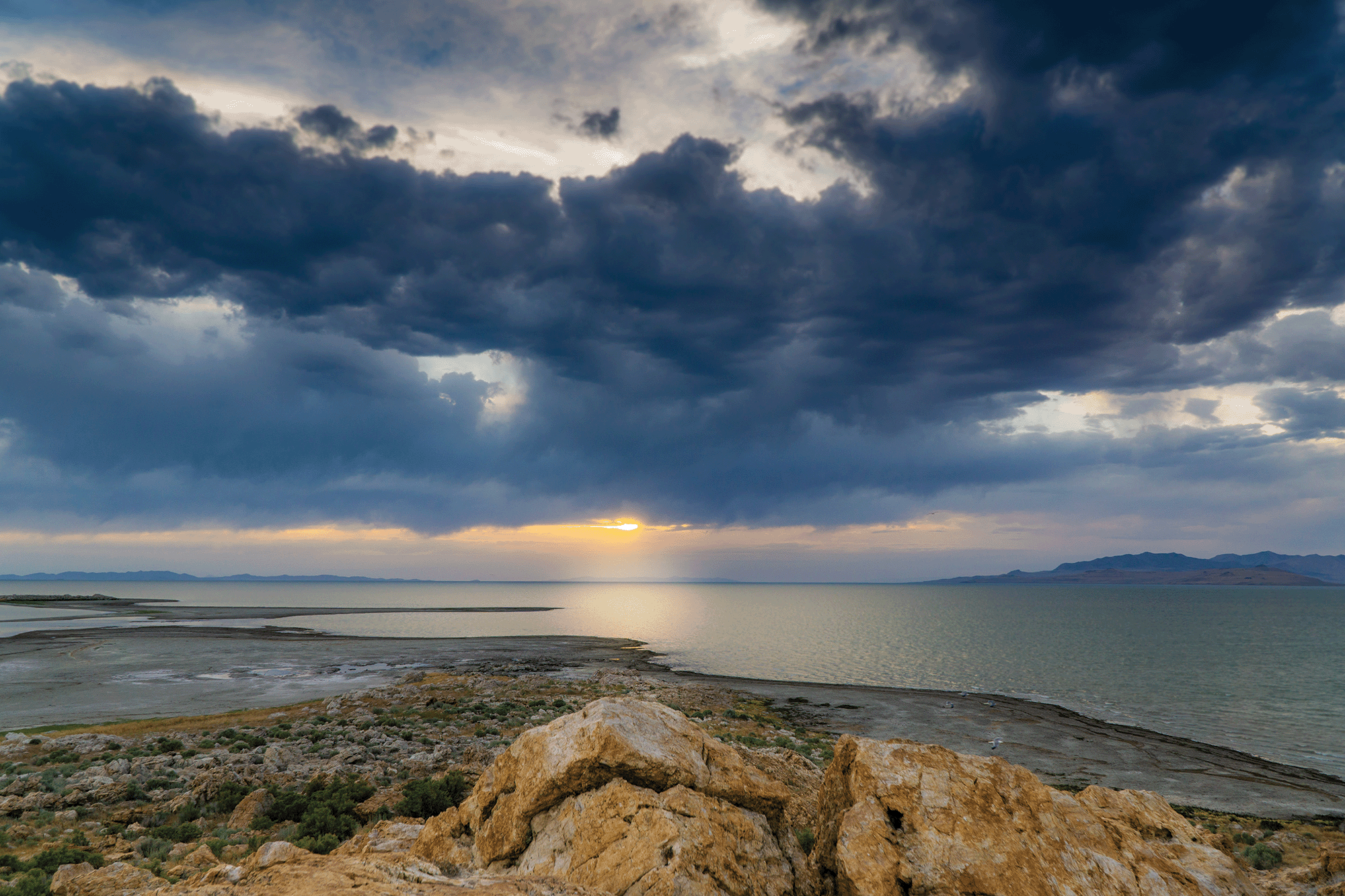News reports from around the country have shined a spotlight on the dire drought situation in the West and the chilling consequences if the Great Salt Lake is lost. A “strike team” of academic and government experts issued findings in February detailing the conditions that led to the lake’s critically low level and options available for rescuing it and its ecosystem.
“Our findings are both stark and hopeful,” say strike team co-chairs Brian Steed JD’02, executive director of the Janet Quinney Lawson Institute for Land, Water, and Air at Utah State University, and William Anderegg, director of the Wilkes Center for Climate Science & Policy at the U. “We firmly believe the Great Salt Lake can be saved, but it will require state leadership, research university technical expertise, and individual and collective action.”
As temperatures have trended upward over the past 40 years, the report states, the amount of precipitation in the basin has stayed roughly the same, on average, while the amount of that water withdrawn by people has increased.
If the lake level sits below certain benchmarks, the report says, the ecosystems within the lake and the residents surrounding it face serious negative consequences. The exposed bed can generate dust storms and potentially introduce toxic metals like arsenic into the air. Low lake levels and increased saltiness also make life harder, and eventually impossible, for the brine shrimp and microbialite organisms that live in the lake and serve as the foundation of its food web.
The record low water elevation of 4,189 feet above sea level, measured in 2022, leads to “serious adverse effects to human, ecological, and economic health. Immediate action must be taken to prevent further impacts,” according to the report. But the worst consequences can be avoided by raising the lake level to an optimal range of 4,198–4,205 feet.
The strike team concludes the report with evaluations of 11 policy actions for the Utah Legislature to consider. Those include the following: leverage wet years; set a lake elevation goal; invest in conservation, as well as water monitoring and modeling; develop a holistic long-term water resource plan for the watershed; and request in-depth analyses on policy options.




I have received a number of emailings from the U over the years but this one is the first that has provided me something of serious interest. I graduated from the U (BSEE 1964) and moved the Arizona (MBA ASU 1972) and have raised a family here in Arizona. I spent a career as a Senior Aerospace Systems Engineer with Motorola. I have fond memories of the lake front west of Ogden where I grew up and the area south of Corinne where we ventured often. My Father was a founding member of the EAST DUCK CLUB west of Ogden and had I stayed I would be a member. I spent many days in developing the club at the mouth of the weber river and exploring its transition into the lake. We hauled duck meat plants and cultivated cattails with pretty good success setting duck blinds as we did. I have often wondered how much of that delightful area has been devastated by the low water. My grandfather many years ago (before WWII) ran the “Odeon”, a dance hall at the old resort Saltair on the lake west of Salt Lake so my interest in the lake is well established. The lake level lowered and ended that site many years ago. The article just got me remembering.